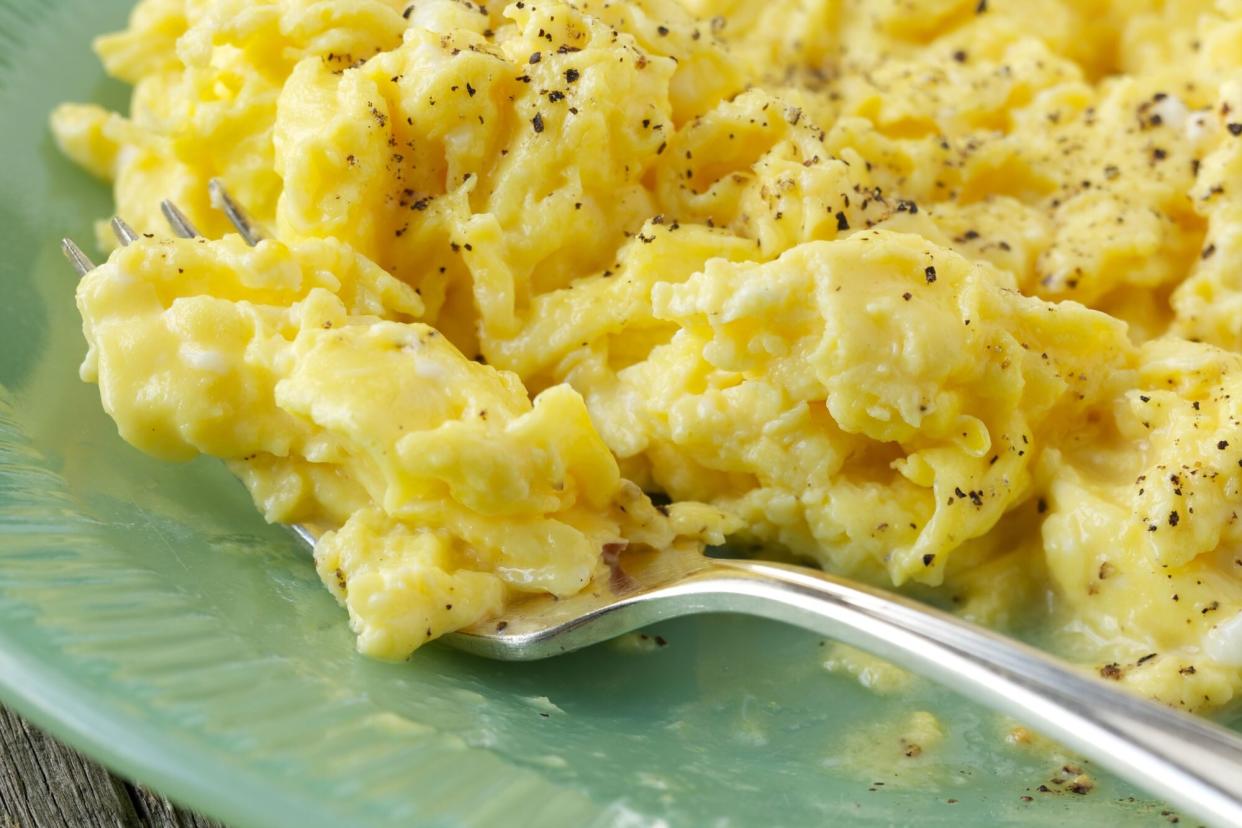The right way to make scrambled eggs for delicious results every time
We've all made disappointing scrambled eggs—but if we're lucky, we've tasted exquisite ones, too. Here's the thing: If perfect scrambled eggs are made from the exact same ingredients as bad scrambled eggs, then how can we do this essential dish justice? As always, the devil is in the details.
Related: The Easiest and Cleanest Way to Peel Hard-Boiled Eggs

GETTY IMAGES
Defining Perfect Scrambled Eggs
It's first important to define sub-par scrambled eggs. They might be rubbery and chewy or dry and crumbly—they might also have the occasional crunch of eggshell, be tinged with brown or gray, or taste more like the pan than an egg. On the other hand, here's how we define our ideal scrambled eggs: fluffy, moist, tender, custardy, and bright yellow. They should taste of pure, rich egg and butter.
It's well worth the extra time—only a few minutes at most—it takes to make scrambled eggs the right way.
What You'll Need
No special equipment is needed to cook delicious scrambled eggs. Use a good nonstick skillet and a heat-proof silicone spatula—that's it.
How to Make Perfect Scrambled Eggs
In addition to eggs, you'll need butter and milk, cream, or water, plus salt and pepper. Butter is our go-to for cooking scrambled eggs, but go ahead and use olive oil or bacon grease if you prefer. Martha often makes scrambled eggs with no added liquid but if you don't have farm-fresh eggs like hers, we suggest adding a small amount of milk or cream (or even water). Shredded cheese or minced fresh herbs can be added at the end of the cooking process, but we are generally purists when it comes to this dish.
Crack the Eggs
First, break the eggs into a bowl. Tap each one on a flat surface (like the countertop) rather than on the edge of the bowl for the cleanest break. This move will reduce the likelihood of getting shattered bits of shell in the mix.
Pro tip: If a piece of shell does get into the bowl, try fishing it out with the edge of a bigger piece of shell. It works better than a fork.
Add Moisture and Mix
Next, use a fork to whisk the eggs, completely incorporating the yolks and whites into one sunny yellow mixture and whipping in a small amount of air for extra fluffiness. Since dryness leads to dense, chewy eggs, this is a chance to boost your eggs with some extra moisture. Adding approximately 1 tablespoon of liquid per egg—milk or cream are delicious, but water works, too—will help create steam and keep the scrambled eggs moist.
Cook With Care
Preheat a nonstick skillet on low heat before adding anything to it. Next, melt a generous pat of butter and swirl the pan to coat the whole surface. Only once the pan is heated and the butter is sizzling, add the whisked egg mixture. Now, be prepared to focus all your attention on the pan for the next few minutes while the eggs cook.
As soon as the egg mixture begins to solidify on the bottom of the hot pan, start stirring with your silicone spatula, continuously scraping the pan to let the still-liquid eggs cook while keeping the cooked layer from burning. This constant stirring not only prevents overcooking, but keeps the texture of the eggs smooth and creamy. If the eggs are cooking faster than you can stir them, don't be afraid to move the pan on and off the burner as a quick way of regulating the heat.
Once the egg mixture is mostly cooked, but still has a few traces of liquid here and there, take the pan off the burner. Now is a good time to stir in shredded cheese or minced herbs. As you do this, the residual heat contained in the eggs will continue to cook them a little.
Serve Immediately
Your scrambled eggs are at their pinnacle of perfection—now is the time to eat. Don't delay in portioning the eggs onto warmed plates (buttered toast, bacon, or a simple green salad are great accompaniments) and enjoy a perfect little feast. When you know how to make excellent scrambled eggs, you'll always have a meal idea up your sleeve that's quick, simple, elegant, affordable, and crowd-pleasing.
Common Scrambled Egg Mistakes
Impatience is probably the number-one enemy of successful scrambled eggs. After all, this is supposed to be a quick dish! It might be tempting to speed things along even more, but the following mistakes only lead to lackluster results:
Cracking eggs directly into the pan
Not waiting for the pan to heat up
Leaving the stove and multitasking instead of stirring
Using whatever pan and spatula are handy
Cranking up the heat to cook the eggs faster
Jumping the gun and cooking the eggs before you're ready to eat






